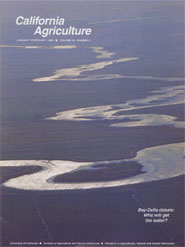All Issues

Bay-Delta debate: Who will get the water?
Cover:
The Bay-Delta is the largest estuary on the west coast of the Americas and is home to 750 species of plants and animals. The Bay-Delta also supplies drinking water to two-thirds of Californians and irrigates 7 million acres of farmland. With a watershed that drains more than a thrid of the state, the Delta's inflow averages 24 million acre feet per year but has dipped as much as 75% in drought years. More than 7,000 water projects divert 20% to 70% of the Delta's natural flow.
January-February 1999
Volume 53, Number 1
Volume 53, Number 1





